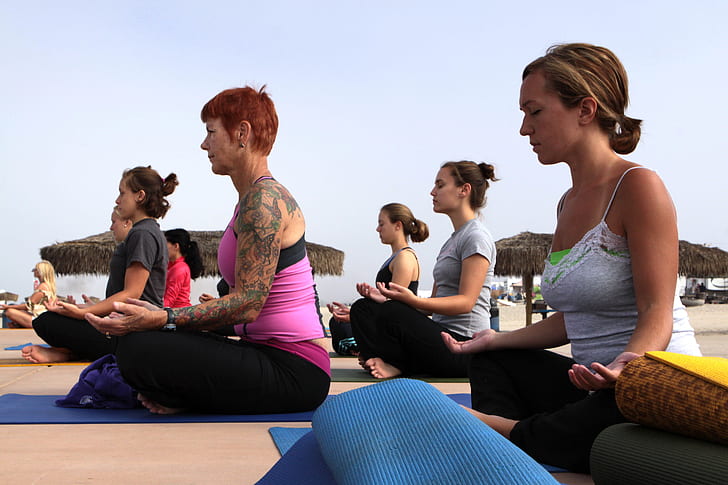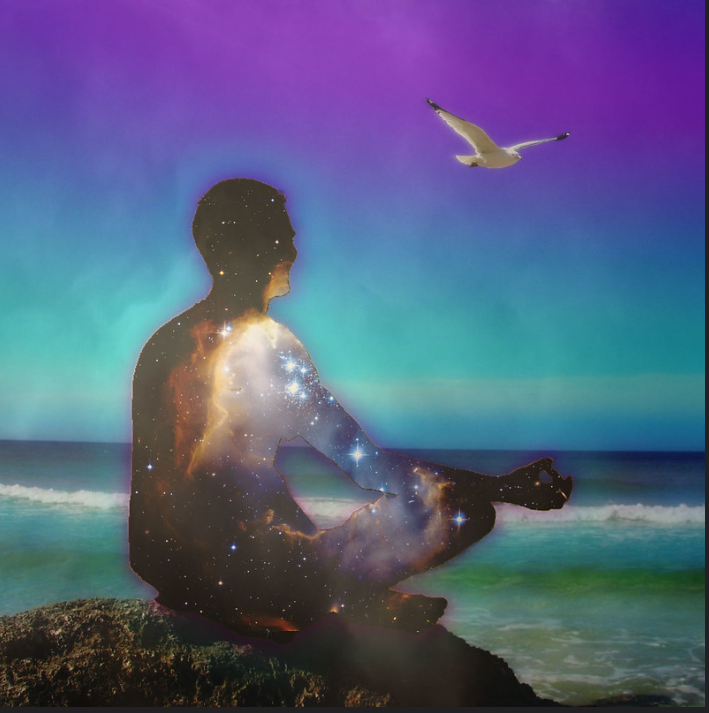Asthang Yoga has been trending now a days for various reasons. I is a traditional system of yoga that was popularized by Sri K. Pattabhi Jois during thde34e 20th century. The term “Ashtanga” means “eight limbs” in Sanskrit, referring to the eight-fold path of yoga. although It was popularized by him but the origin is traced back to an ancient sage Patanjali. In this blogpost we will be exploring in detail about what is Asthang Yoga?
Who was Patanjali?
Patanjali is an Indian sage who is believed to have written the Yoga Sutras, which is now considered as the most important text on yoga. (Yoga Sutra of Patanjali, 20) Patanjali’s Yoga Sutras flourished between the second century B.C.E to the fourth century C.E in India and contains 196 sutras that are categorized into four chapters (padas). Not just yoga, Patanjali is also considered to be the author of works on grammar and Ayurveda. His legacy continues in his compilation of the Yoga Sutras, a traditional system that helps one to realize self-transcendence through understanding and highlightening ethics (yamas/niyamas), postures (asanas), pranayama (breathing exercises), sense withdrawl, concentration and meditation. His methodology helped move beyond cast, religion, ethnicity or any sectarianism as it informed spiritual seekers back then as it still does now that aspire for moksha. Earlier scholars used to study Vedic scriptural philosophy were taught this by their guru for their curriculum. Lets understand more about Patanjali sutras now.

Eight Components of Asthang Yoga
Here are the eight limbs or components of Ashtanga Yoga:
1.Yama: Ethical guidelines or moral disciplines, including principles like non-violence, truthfulness, non-stealing, non-excess, and non-possessiveness.
Niyama: Self-disciplines or personal observances, such as cleanliness, contentment, austerity, self-study, and surrender to a higher power.
Asana: Physical postures practiced in yoga to develop strength, flexibility, and balance. In the context of Ashtanga Yoga, this primarily refers to a specific series of dynamic and challenging postures.
Pranayama: Control and expansion of the breath through various techniques, aimed at regulating the life force (prana) in the body.
Pratyahara: Withdrawal of the senses from external distractions, focusing the mind inward.
Dharana: Concentration, the ability to focus the mind steadily on a single point or object.
Dhyana: Meditation, where concentration leads to a state of profound contemplation or absorption.
Samadhi: Union or integration, the ultimate goal of yoga where the practitioner experiences a state of oneness with the object of meditation or with the universe.
Eight Components of Asthang Yoga in Details
Certainly! Let’s delve into each of the eight limbs of Ashtanga Yoga with more detail:
1. Yama: Yamas are ethical guidelines or moral disciplines that guide our behavior towards others and the world around us. There are five Yamas:
- Ahimsa: Non-violence or non-harming. This means avoiding physical, mental, and emotional harm to others and oneself.
- Satya: Truthfulness. Being honest in our thoughts, speech, and actions.
- Asteya: Non-stealing. Not taking what does not belong to us, whether it’s physical objects, ideas, or someone’s time and energy.
- Brahmacharya: Moderation or conservation of energy. Traditionally interpreted as celibacy or restraint in sexual energy, it can also mean channeling one’s energy towards spiritual pursuits.
- Aparigraha: Non-possessiveness or non-greediness. Letting go of attachments to material possessions and desires
2. Niyama: Niyamas are personal observances or disciplines that foster self-discipline and spiritual growth. There are also five Niyamas:
- Saucha: Cleanliness or purity, both externally and internally. This includes cleanliness of the body, environment, and mind.
- Santosha: Contentment. Being satisfied with what one has, rather than constantly seeking external sources of happiness.
- Tapas: Austerity or self-discipline. Cultivating self-discipline and determination to achieve one’s goals.
- Svadhyaya: Self-study or study of spiritual texts. This involves introspection, self-reflection, and studying sacred texts to gain self-knowledge.
- Ishvara Pranidhana: Surrender to a higher power or devotion to the divine. Acknowledging and accepting that there is a greater purpose beyond our individual selves.
3. Asana: Asanas are physical postures practiced in yoga. In Ashtanga Yoga, specific sequences of asanas (poses) are practiced in a flowing manner, synchronized with deep breathing (ujjayi breath). The primary purpose of asanas is to purify and strengthen the body, improve flexibility, and prepare the mind for meditation.
4. Pranayama: Pranayama involves breath control techniques that regulate the flow of prana (life force energy) in the body. Through pranayama, practitioners learn to control and expand their breath, which in turn calms the mind, increases concentration, and enhances vitality.
5. Pratyahara: Pratyahara means withdrawal or mastery of the senses. It involves consciously withdrawing the senses from external stimuli and turning the attention inward. By practicing pratyahara, one develops inner awareness and reduces distractions during meditation and introspection.
6. Dharana: Dharana is concentration or the practice of focusing the mind on a single point or object. It involves training the mind to remain steady and focused without wavering. Concentration practices in yoga often involve focusing on a mantra, an image, or the breath.
7.Dhyana: Dhyana is meditation, a state of deep contemplation or absorption. In dhyana, the practitioner experiences a profound state of concentration where the mind becomes calm, clear, and tranquil. Meditation leads to heightened awareness, inner peace, and spiritual insight.
8. Samadhi: Samadhi is the ultimate goal of yoga, often described as a state of ecstasy or enlightenment. It is a state of complete union with the object of meditation or with the universal consciousness. In samadhi, the practitioner transcends the boundaries of the individual self and experiences unity with the divine or ultimate reality.
Summary
These eight limbs of Ashtanga Yoga provide a systematic and holistic approach to spiritual and personal development. They guide practitioners on a journey towards self-discovery, inner peace, and spiritual fulfillment through ethical living, physical practice, breath control, sense withdrawal, concentration, meditation, and ultimately, union with the divine.

